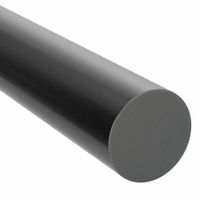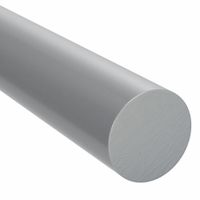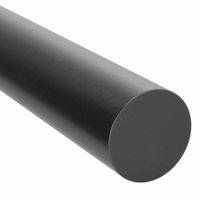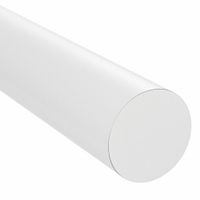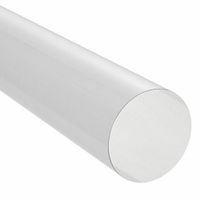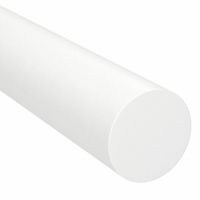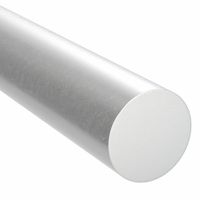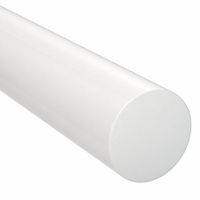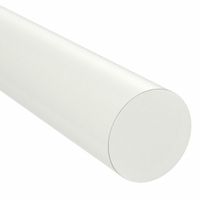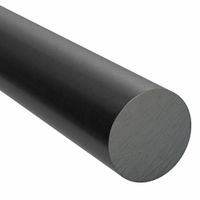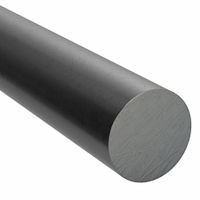Call +(254) 703 030 000 / 751 483 999 / 721 704 777
- Home
- Welding
- Plastic Welding
- Plastic Welding Rods
.....Read More
Frequently Asked Questions
What types of plastic welding rods are available?
Plastic welding rods are available in various types, each designed for specific applications and compatible with different types of plastics. The main types include:
1. **Polyethylene (PE) Rods**: Used for welding polyethylene materials, including high-density polyethylene (HDPE) and low-density polyethylene (LDPE). They are flexible and resistant to chemicals and moisture.
2. **Polypropylene (PP) Rods**: Suitable for welding polypropylene plastics, known for their chemical resistance and toughness. Commonly used in automotive and industrial applications.
3. **Polyvinyl Chloride (PVC) Rods**: Available in rigid and flexible forms, these rods are used for welding PVC materials. They are resistant to chemicals and weathering, making them ideal for piping and outdoor applications.
4. **Polycarbonate (PC) Rods**: Used for welding polycarbonate plastics, known for their impact resistance and clarity. They are often used in the construction of transparent barriers and enclosures.
5. **Acrylonitrile Butadiene Styrene (ABS) Rods**: Suitable for welding ABS plastics, which are known for their strength and rigidity. Commonly used in automotive parts and consumer products.
6. **Polyamide (Nylon) Rods**: Used for welding nylon materials, which are strong and resistant to wear and abrasion. They are often used in mechanical and industrial applications.
7. **Polystyrene (PS) Rods**: Suitable for welding polystyrene plastics, known for their rigidity and ease of molding. Commonly used in packaging and disposable products.
8. **Polyurethane (PU) Rods**: Used for welding polyurethane materials, which are flexible and resistant to abrasion. They are often used in seals and gaskets.
Each type of rod is designed to match the specific properties of the plastic being welded, ensuring a strong and durable bond.
How do I choose the right plastic welding rod for my project?
To choose the right plastic welding rod for your project, consider the following factors:
1. **Material Compatibility**: Match the welding rod material with the plastic you are welding. Common types include:
- **Polyethylene (PE)**: Use PE rods for polyethylene plastics.
- **Polypropylene (PP)**: Use PP rods for polypropylene plastics.
- **Polyvinyl Chloride (PVC)**: Use PVC rods for PVC plastics.
- **Acrylonitrile Butadiene Styrene (ABS)**: Use ABS rods for ABS plastics.
2. **Rod Shape and Size**: Select the appropriate shape (round, triangular, or flat) and diameter based on the joint design and thickness of the material. Thicker materials may require larger diameter rods.
3. **Color Matching**: Choose a rod color that matches the base material for aesthetic purposes, especially in visible applications.
4. **Rod Quality**: Ensure the rods are of high quality, free from impurities, and consistent in diameter to ensure strong, uniform welds.
5. **Welding Method**: Consider the welding technique (hot air, extrusion, or ultrasonic) and ensure the rod is suitable for the chosen method.
6. **Environmental Conditions**: Consider the operating environment of the finished product. For example, UV-stabilized rods are necessary for outdoor applications.
7. **Mechanical Properties**: Evaluate the mechanical properties required, such as flexibility, tensile strength, and impact resistance, to ensure the rod meets the project’s demands.
8. **Supplier Reputation**: Purchase from reputable suppliers to ensure the rods meet industry standards and specifications.
By considering these factors, you can select the appropriate plastic welding rod that ensures a strong, durable, and visually appealing weld for your specific project.
Where can I buy plastic welding rods?
You can purchase plastic welding rods from a variety of sources, both online and in physical stores. Here are some options:
1. **Online Retailers**: Websites like Amazon, eBay, and Walmart offer a wide selection of plastic welding rods in different materials such as PVC, ABS, and polypropylene. These platforms often provide customer reviews and ratings, which can help you choose the right product.
2. **Specialty Online Stores**: Websites like U.S. Plastic Corp, McMaster-Carr, and Grainger specialize in industrial and plastic products, including welding rods. They offer detailed product specifications and technical support.
3. **Local Hardware Stores**: Chains like Home Depot, Lowe's, and Ace Hardware may carry plastic welding rods, especially in larger locations. It's advisable to call ahead to check availability.
4. **Automotive Supply Stores**: Stores like AutoZone or NAPA Auto Parts sometimes stock plastic welding rods, particularly those used for automotive repairs.
5. **Industrial Supply Stores**: Local industrial supply stores or distributors may have a range of plastic welding rods, especially if they cater to manufacturing or repair industries.
6. **Plastic Fabrication Shops**: These specialized shops often sell materials and tools for plastic welding, including rods. They can also provide expert advice on the best type of rod for your project.
7. **Online Marketplaces for Industrial Goods**: Websites like Alibaba or Global Sources offer bulk purchasing options for plastic welding rods, which can be cost-effective for large projects.
8. **Local Classifieds and Forums**: Websites like Craigslist or specialized forums may have listings for plastic welding rods, either new or leftover from other projects.
When purchasing, ensure the rods are compatible with your welding equipment and the type of plastic you are working with.
What is the difference between different colors of plastic welding rods?
Different colors of plastic welding rods typically indicate the type of plastic material they are made from, which is crucial for ensuring compatibility with the plastic being repaired or fabricated. Here are the common types and their associated colors:
1. **Polyethylene (PE):** Often comes in natural, black, or white. Used for tanks, containers, and pipes. It is flexible and resistant to chemicals.
2. **Polypropylene (PP):** Usually available in natural, black, or gray. Common in automotive parts, battery cases, and chemical tanks. It is known for its fatigue resistance and elasticity.
3. **Polyvinyl Chloride (PVC):** Typically gray or white. Used in plumbing pipes and fittings. It is rigid and resistant to chemicals and weathering.
4. **Acrylonitrile Butadiene Styrene (ABS):** Often black or white. Found in automotive parts, toys, and electronic housings. It is strong and impact-resistant.
5. **Polycarbonate (PC):** Usually clear or transparent. Used in eyewear lenses, CDs, and bulletproof glass. It is tough and has high impact resistance.
6. **Polyamide (Nylon):** Typically natural or black. Used in gears, bearings, and bushings. It is strong, wear-resistant, and has good thermal properties.
7. **Polyurethane (PU):** Often amber or clear. Used in wheels, seals, and gaskets. It is flexible and abrasion-resistant.
The color coding helps in quickly identifying the type of plastic, ensuring that the welding rod matches the material being worked on, which is essential for achieving a strong, durable weld. Using the wrong type of rod can lead to weak joints and potential failure of the welded part.
How do I store plastic welding rods properly?
To store plastic welding rods properly, follow these guidelines:
1. **Environment**: Store in a cool, dry place away from direct sunlight and extreme temperatures. Excessive heat can cause warping or melting, while cold can make them brittle.
2. **Humidity Control**: Keep in a low-humidity environment to prevent moisture absorption, which can affect welding quality. Use a dehumidifier if necessary.
3. **Original Packaging**: Keep rods in their original packaging until use. The packaging is designed to protect them from environmental factors.
4. **Sealed Containers**: If original packaging is unavailable, use airtight containers or resealable plastic bags to prevent exposure to air and moisture.
5. **Vertical Storage**: Store rods vertically to prevent bending or warping. Use a rod holder or a similar device to keep them upright.
6. **Labeling**: Clearly label containers with the type and size of rods to avoid confusion and ensure easy access.
7. **Segregation**: Store different types of rods separately to prevent cross-contamination. Mixing different materials can lead to poor welding results.
8. **Inventory Management**: Implement a first-in, first-out (FIFO) system to use older rods first, ensuring they do not degrade over time.
9. **Away from Chemicals**: Keep rods away from chemicals or solvents that could cause degradation or contamination.
10. **Regular Inspection**: Periodically check rods for signs of damage, moisture, or contamination. Discard any compromised rods.
By following these storage practices, you can maintain the integrity and performance of plastic welding rods, ensuring optimal results in your welding projects.
Can plastic welding rods be used on all types of plastics?
No, plastic welding rods cannot be used on all types of plastics. Plastic welding involves joining two pieces of plastic using heat, pressure, and a filler material, which is the welding rod. The compatibility of the welding rod with the plastic being welded is crucial for a successful bond.
Different types of plastics have varying chemical compositions, melting points, and properties, which means that welding rods must be specifically matched to the type of plastic being welded. Common types of plastics used in welding include polyethylene (PE), polypropylene (PP), polyvinyl chloride (PVC), and acrylonitrile butadiene styrene (ABS). Each of these plastics requires a corresponding welding rod made from the same or a compatible material to ensure proper adhesion and strength.
Using an incompatible welding rod can result in weak joints, poor adhesion, or even damage to the plastic. For instance, a polyethylene welding rod will not properly bond with polypropylene plastic due to differences in their chemical structures. Additionally, some plastics, like thermosetting plastics, cannot be welded at all because they do not melt upon heating.
Therefore, it is essential to identify the type of plastic being welded and select the appropriate welding rod to ensure a strong and durable weld. Manufacturers often provide guidelines or specifications for the suitable welding rods for their plastic products, and it is advisable to follow these recommendations for optimal results.
What is the shelf life of plastic welding rods?
The shelf life of plastic welding rods can vary depending on the type of plastic, storage conditions, and manufacturer specifications. Generally, plastic welding rods made from materials like polyethylene (PE), polypropylene (PP), and polyvinyl chloride (PVC) can have a shelf life ranging from 1 to 5 years. However, this can be influenced by several factors:
1. **Material Type**: Different plastics have different properties. For instance, PVC rods may have a longer shelf life compared to more sensitive materials like polycarbonate.
2. **Storage Conditions**: Proper storage is crucial. Welding rods should be kept in a cool, dry place away from direct sunlight and moisture. Exposure to UV light and humidity can degrade the material, reducing its effectiveness.
3. **Packaging**: Original packaging often provides protection against environmental factors. Keeping rods in their original, sealed packaging can help extend their shelf life.
4. **Manufacturer Guidelines**: Always refer to the manufacturer's recommendations for specific shelf life information. Some manufacturers may include additives to enhance the longevity of their products.
5. **Signs of Degradation**: Before use, inspect the rods for any signs of brittleness, discoloration, or surface cracking, which can indicate that the material has degraded and may not perform optimally.
In summary, while plastic welding rods can last several years under ideal conditions, it is essential to follow storage guidelines and regularly inspect the rods to ensure they remain in good condition for effective use.

